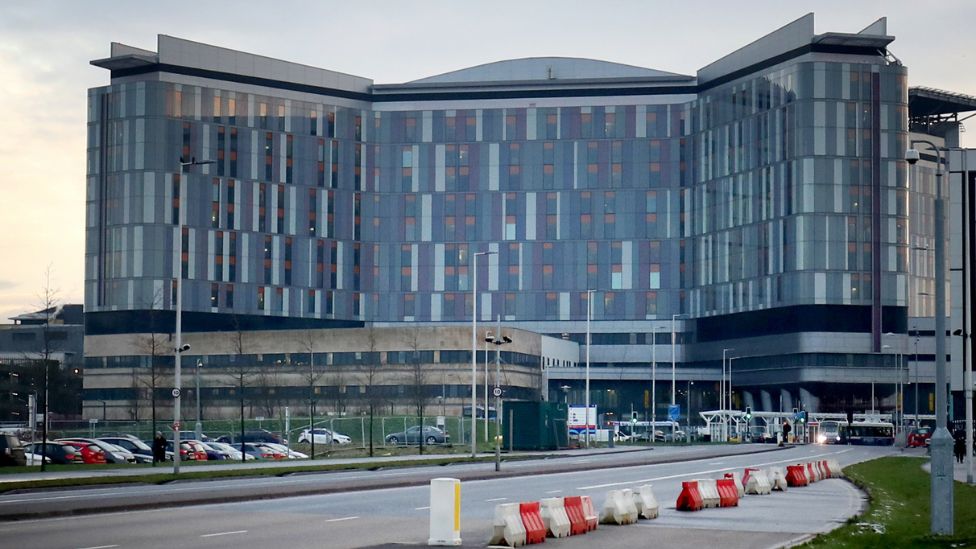
The Queen Elizabeth University Hospital in Glasgow is among the sites identified in the desktop survey
More than half of the NHS buildings in Scotland which are suspected to contain a potentially dangerous form of concrete have not been fully inspected.
Reinforced autoclaved aerated concrete (Raac) could be present in up to 254 NHS buildings including hospitals.
The Scottish government confirmed 97 buildings have been assessed since a review was ordered.
The crumbly material can collapse without warning.
It comes after more than 30 schools in Scotland were found to contain Raac. It led to a scramble to find alternative temporary classrooms, with some schools reintroducing online learning, amid safety fears.
Buildings in 10 universities were also closed while assessments for the concrete take place.
High and medium risk
A review which started several months ago identified 254 NHS buildings had two or more characteristics that are consistent with the presence of Raac.
The Scottish government said 97 buildings have now been physically surveyed – and it expects all the possible sites which it describes as “high and medium risk” to be assessed by November.
A Scottish government spokesperson said they are taking the issue “very seriously” and are “fully aware” of the issues that can be caused by Raac.
They said: “Reviews of Raac have been conducted by local authorities, NHS Scotland and other public sector organisations for some time so we can all fully understand the scope of Raac including in hospitals.
“In addition we established a cross sector working group on Raac to ensure action is taken where required so that people are safe and feel safe in buildings.”
Scottish Labour’s health spokesperson Jackie Baillie said NHS staff and patients were being “left in the dark” over the safety of hospitals and clinics.
She said: “With the threat of Raaac so clear, there can be no cause for delay.
“If the government drag their heels on this vital issue, they will only prolong the disruption that it will cause and put staff and patients in more danger.”
NHS Assure – the body responsible for NHS building safety – said 132 of 254 identified buildings are at high risk of containing Raac while 122 were medium risk.
Major sites such as Ninewells Hospital in Dundee, University Hospital Crosshouse in Kilmarnock and the more recently-constructed Queen Elizabeth University Hospital in Glasgow are named in the report as having buildings which could contain Raac.
Image source, Creative Commons Licence
The lightweight concrete was widely used from the 1960s to the 1990s
NHS Grampian had the most buildings which could potentially contain Raac, with 53 identified by the health board, followed by NHS Greater Glasgow and Clyde with 44 and NHS Lothian with 35.
NHS Highland identified 25 potentially affected buildings, while NHS Fife had 22. NHS Forth Valley reported eight and NHS Borders seven.
The concrete, an aerated substance, was used to build roofs, walls and floors from the 1960s to the 1990s.
Structural engineers are required to confirm if the material is present in the buildings. They will also advise on how to manage or remove it.








